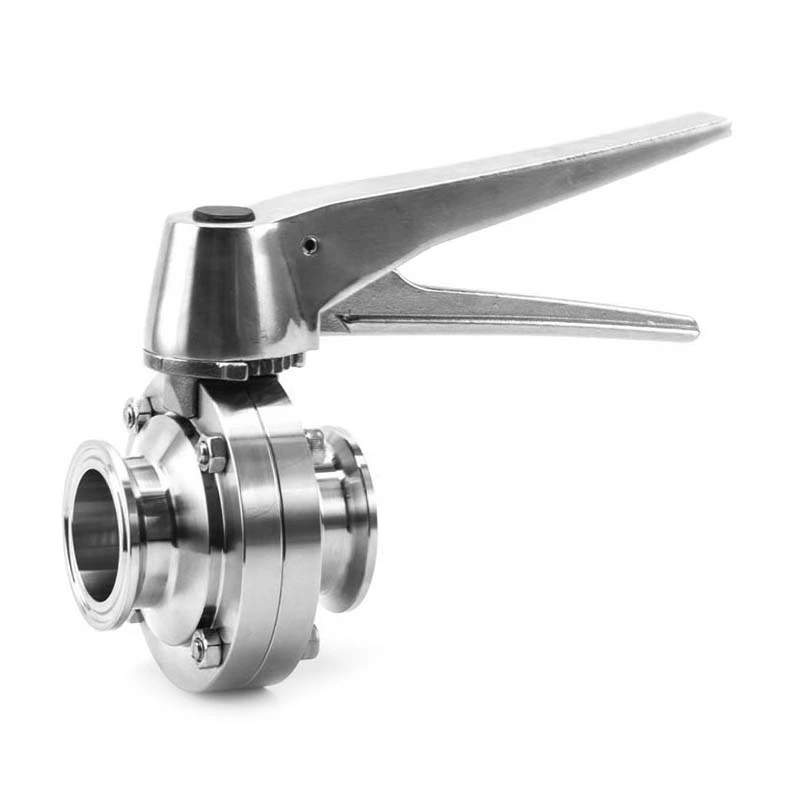Pneumatic Butterfly Valve Design Makes It More Useful In Industry
Sanitary Butterfly Valve design makes it more useful in industry
Pneumatic butterfly valves have been applied in many industrial productions due to their simple structure, small size, light weight, low material consumption, small installation size, fast switching, small driving torque, good fluid control characteristics and closing sealing performance, such as petroleum, metallurgy, electricity and chemical industry. Some large pneumatic butterfly valves are mainly composed of three parts: valve, control system and pneumatic device. The valve stem and the butterfly plate are connected by splines or square tenons. After the valve stem bears the input torque, the splines or square tenons drive the butterfly plate to open and close.
Compared with ordinary butterfly valves, this butterfly valve has high temperature resistance, easy operation, no friction when opening and closing, and relies on the torque of the transmission mechanism to ensure sealing when closing, which improves the sealing function of the butterfly valve and extends the service life of the valve. The remote control of the valve is completed by the control box.
In some normal opening and closing situations of the valve, for example, whether the valve switch of some independent pressure regulating valves is in place affects the safety of the valve, so in many cases, the mechanical limit switch installed on the valve sends the signal to the control box. The control box will respond to the remote control system with the remote control effective signal. The control box will promptly receive the remote control command, complete the valve opening or closing action, and display the open or closed status in time on the control box panel, and also respond to the remote control system with the valve position status signal in the form of passive contacts.
During the pneumatic installation and manufacturing process, the coaxiality of the two holes common to the box body and the drive shaft, the verticality of the center line of the two holes relative to the connecting flange, the coaxiality of the two holes common to the box body and the piston rod, the position of the center line of the common hole with the drive shaft, the position of the common guide groove of the fork and the slider and the center line of the common hole of the fork and the drive shaft, the roughness, roundness, cylindricity and other accuracy of the inner hole of the cylinder body should be strictly controlled. The surface of the inner hole of the cylinder body should be treated with anti-corrosion. Generally speaking, some large starting butterfly valves should have the characteristics of frictionless opening and closing, quick shut-off, manual pneumatic operation, local and remote control, etc.
